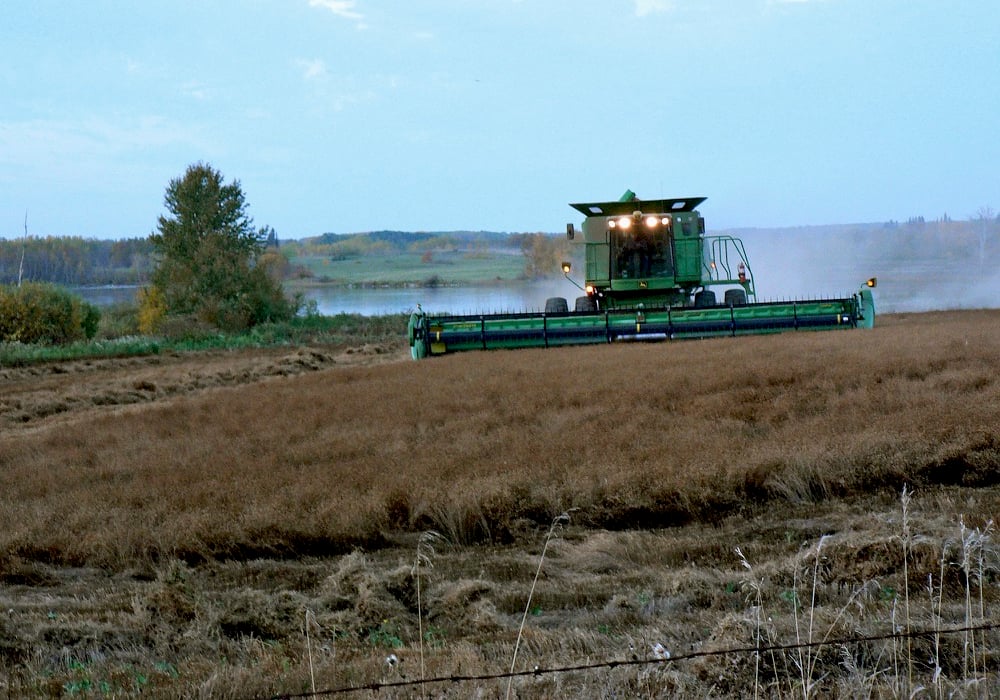WINNIPEG, July 13 (CNS) – The condition of major Saskatchewan crops has deteriorated over the past two weeks but the pace of maturation has caught up to normal.
Saskatchewan Agriculture says in its weekly crop report released July 13 that most crops are at the normal stage of development.
However, lack of rain and heat during the last two weeks have deteriorated crops.
For example the amount of canola rated good to excellent declined to 57 percent from 60 percent on June 26. Last year at this time the good to excellent rating was 90 percent.
Read Also

Most of Manitoba harvest wraps up for 2025
Manitoba Agriculture issued its final crop report of 2025, showing the overall provincewide harvest at 97 per cent complete as of Oct. 20. Nearly all major crops have finished combining, with 37 per cent of Manitoba’s sunflowers finished, plus 71 per cent of grain corn and small amounts of soybeans and potatoes left to do.
Spring wheat was rated 68 good to excellent, down from 70 percent June 26 and 92 percent last year.
Durum was rated 43 percent good to excellent, down from 49 percent two weeks ago and 93 percent last year.
The report, covering the July 4-10 period, stated 84 percent of fall cereals, 69 percent of spring cereals, 67 percent of oilseeds and 80 percent of pulses are at normal or ahead of normal development for this time of year.
Some areas received rain during the week, but many crops still need significant moisture to develop, the crop report said.
Rain ranged from trace amounts to 80 millimetres around Kelvington.
Province-wide, topsoil moisture on cropland is rated two percent surplus, 41 percent adequate, 46 percent short, and 11 percent very short. Hay land and pasture topsoil is rated as three percent surplus, 32 percent adequate, 49 percent short and 16 percent very short.
Heat and rain shortages are damaging crops, especially in the southern part of the south region, but also stretching into some central areas of the grain belt.
Many areas in the south and central regions have received less than 100 mm of moisture since April 1.
In the southwest, topsoil moisture on cropland is rated 21 percent adequate, 55 percent short and 24 percent very short. In the southeast, topsoil moisture on cropland is rated one percent surplus, 38 percent adequate, 54 percent short and seven percent very short.
Some crops in the driest areas are short, thin and heading out or flowering earlier than normal because of heat stress. Field are variable, depending on which were lucky enough to receive rain.
Precipitation during the next two weeks could still help with pod fill and head fill, although some yield loss is inevitable in the driest areas, the report said.
Farmers also reported crop damage from hail, localized flooding, wind and insects. Alfalfa weevils, painted lady caterpillars and wheat midge have been sighted. Leaf spot and root rot are also causing damage.
Producers have cut about 25 percent of the hay crop and baled or put into silage about 40 percent. Quality is rated as 17 percent excellent, 59 percent good, 22 percent fair and two percent poor.














